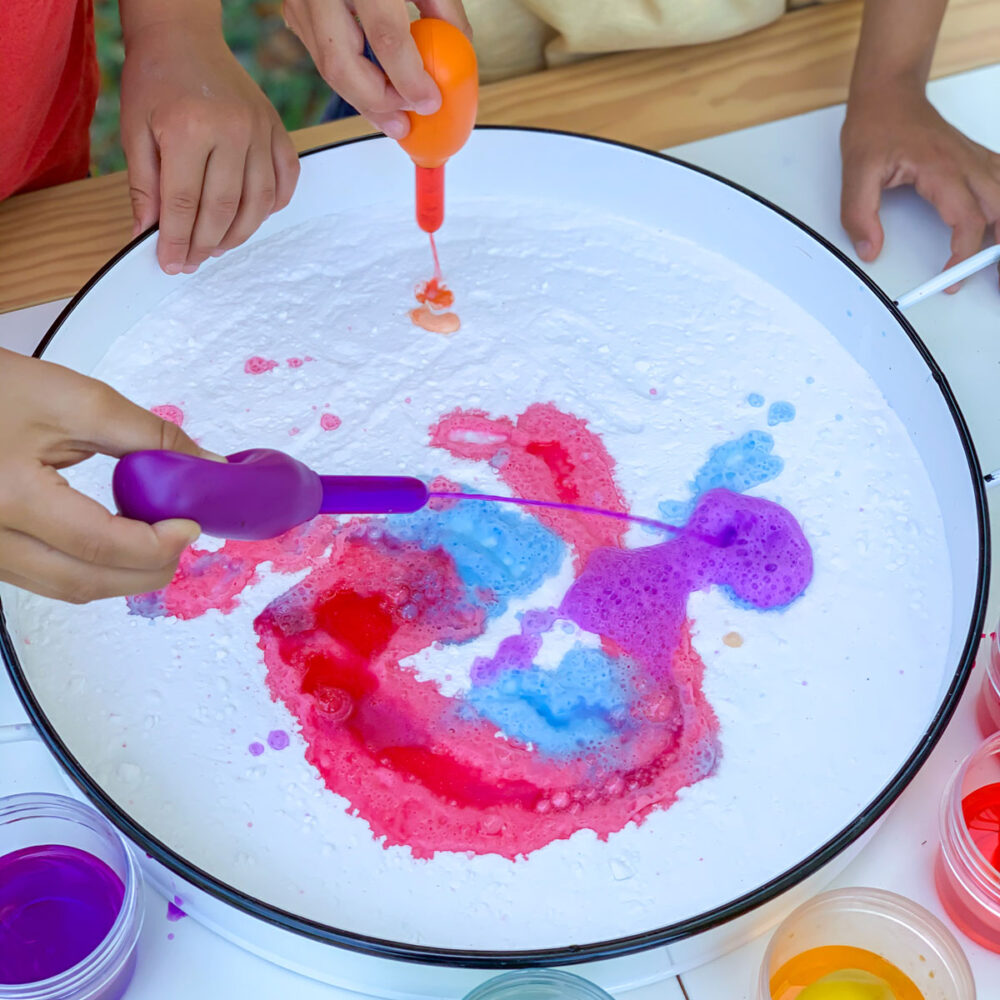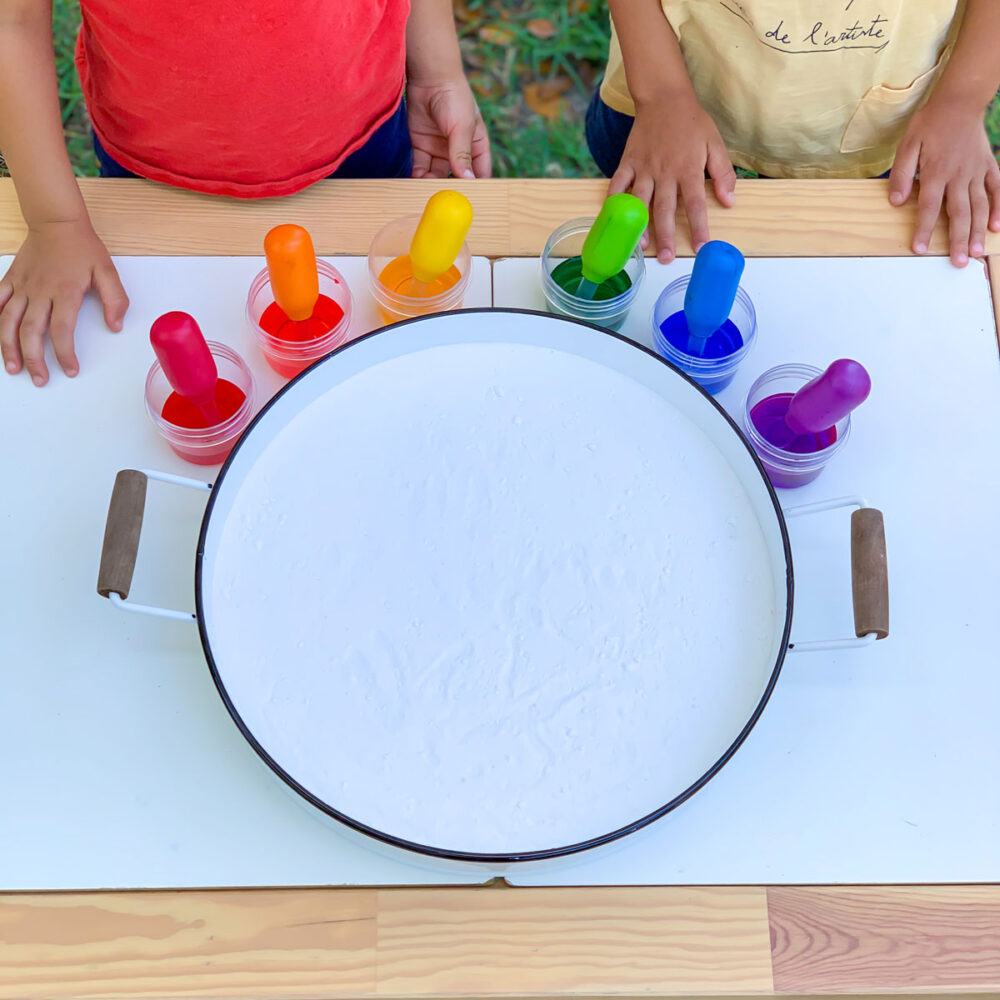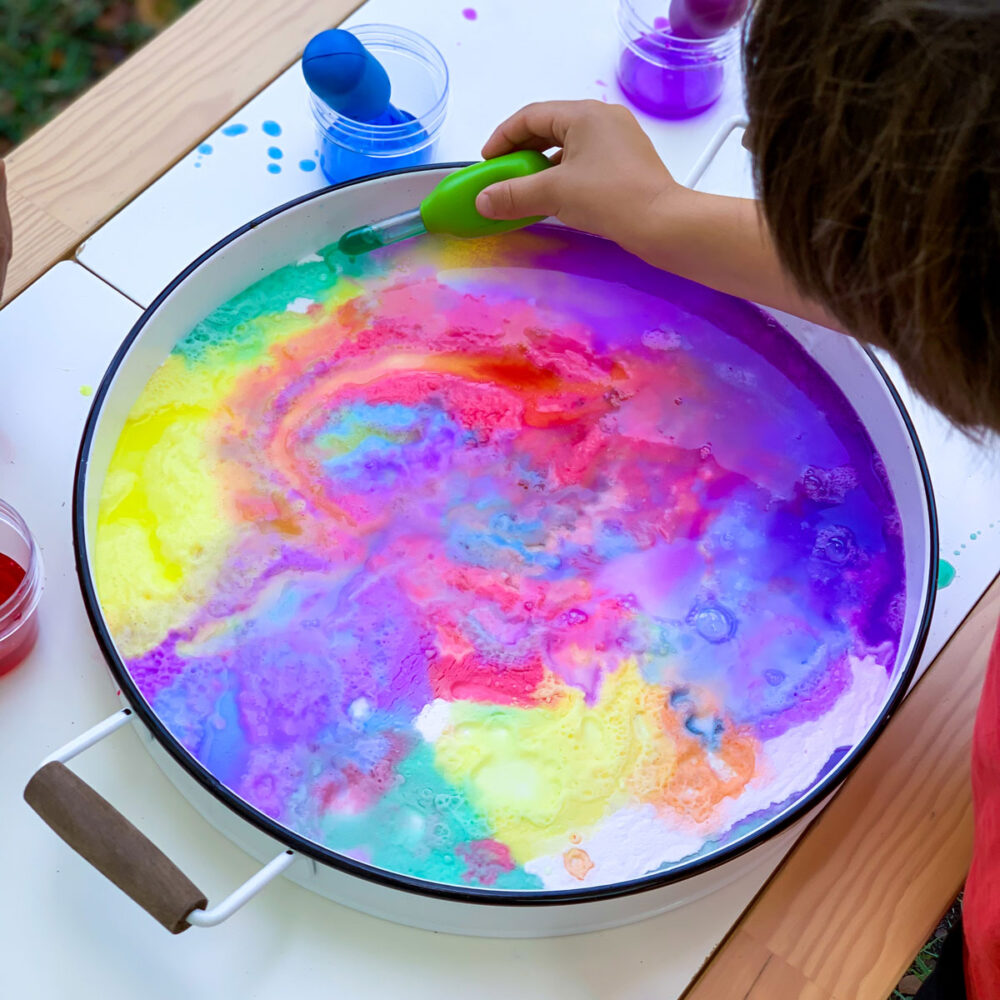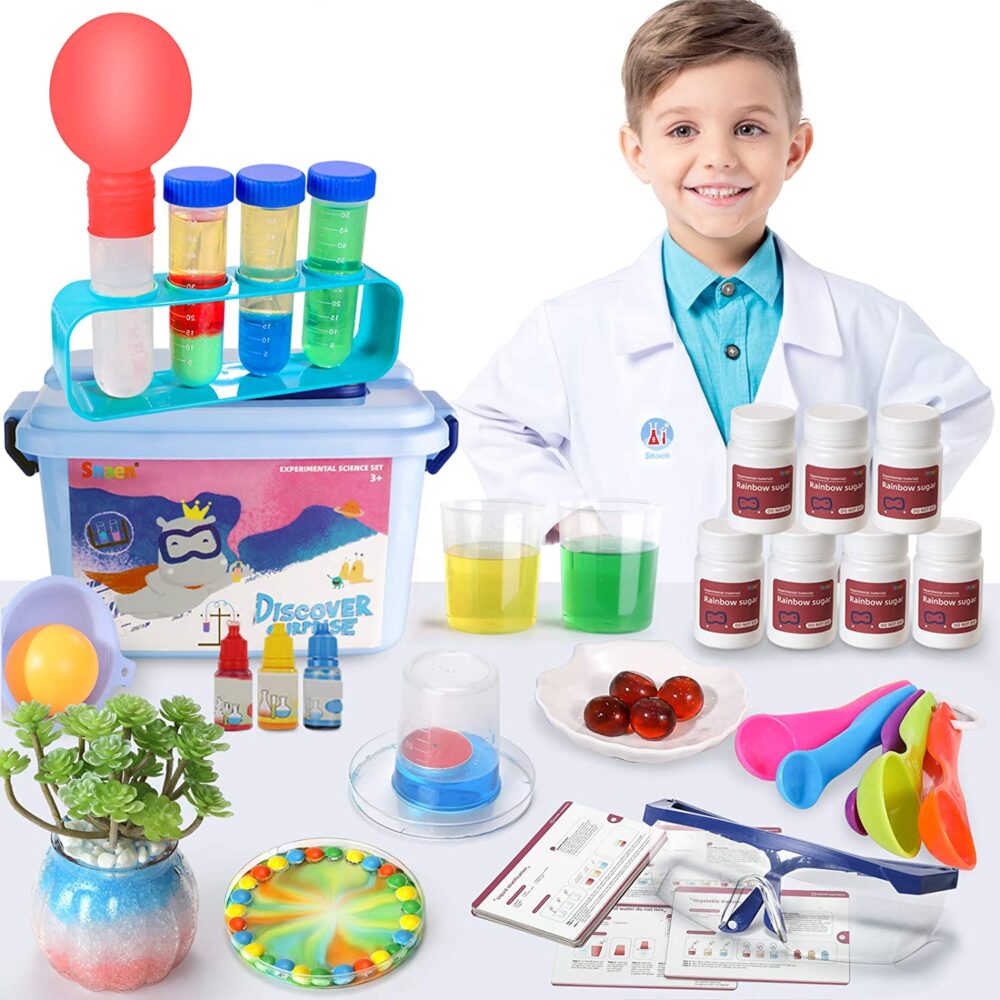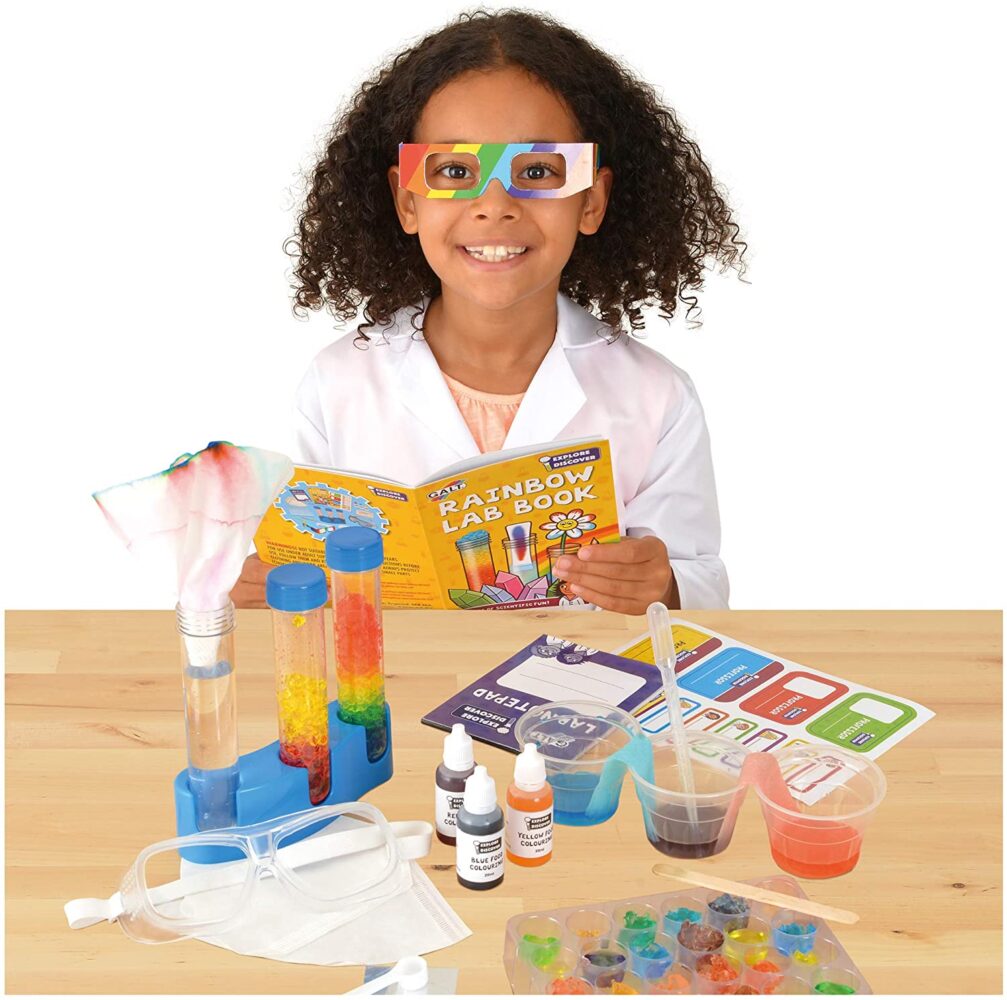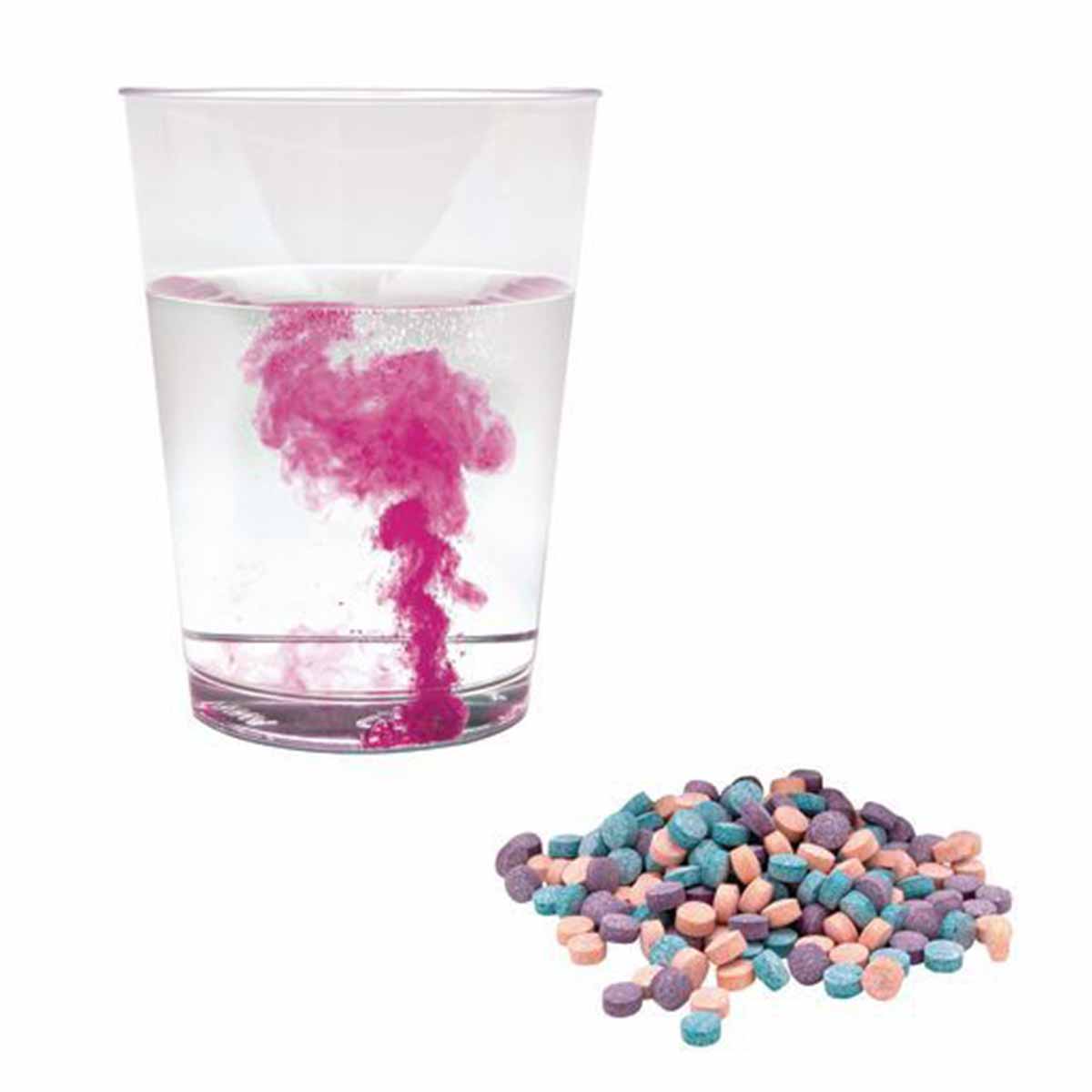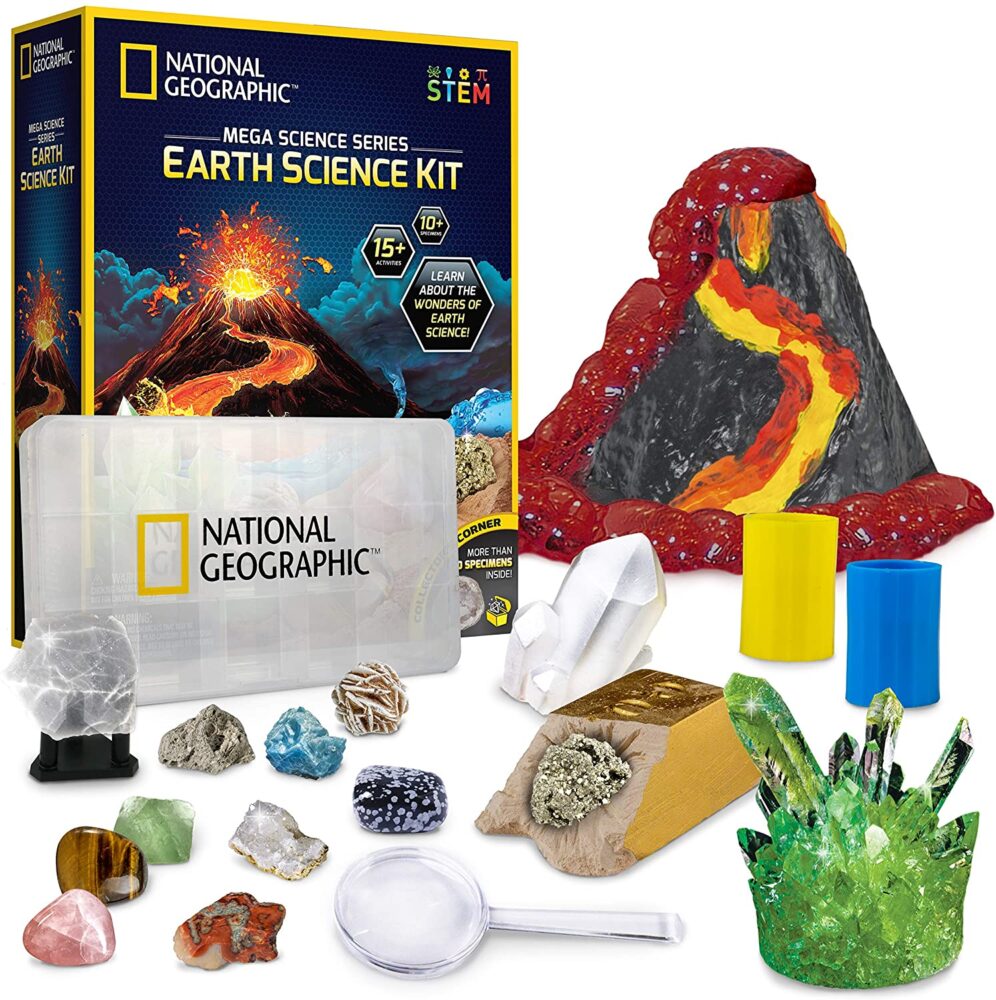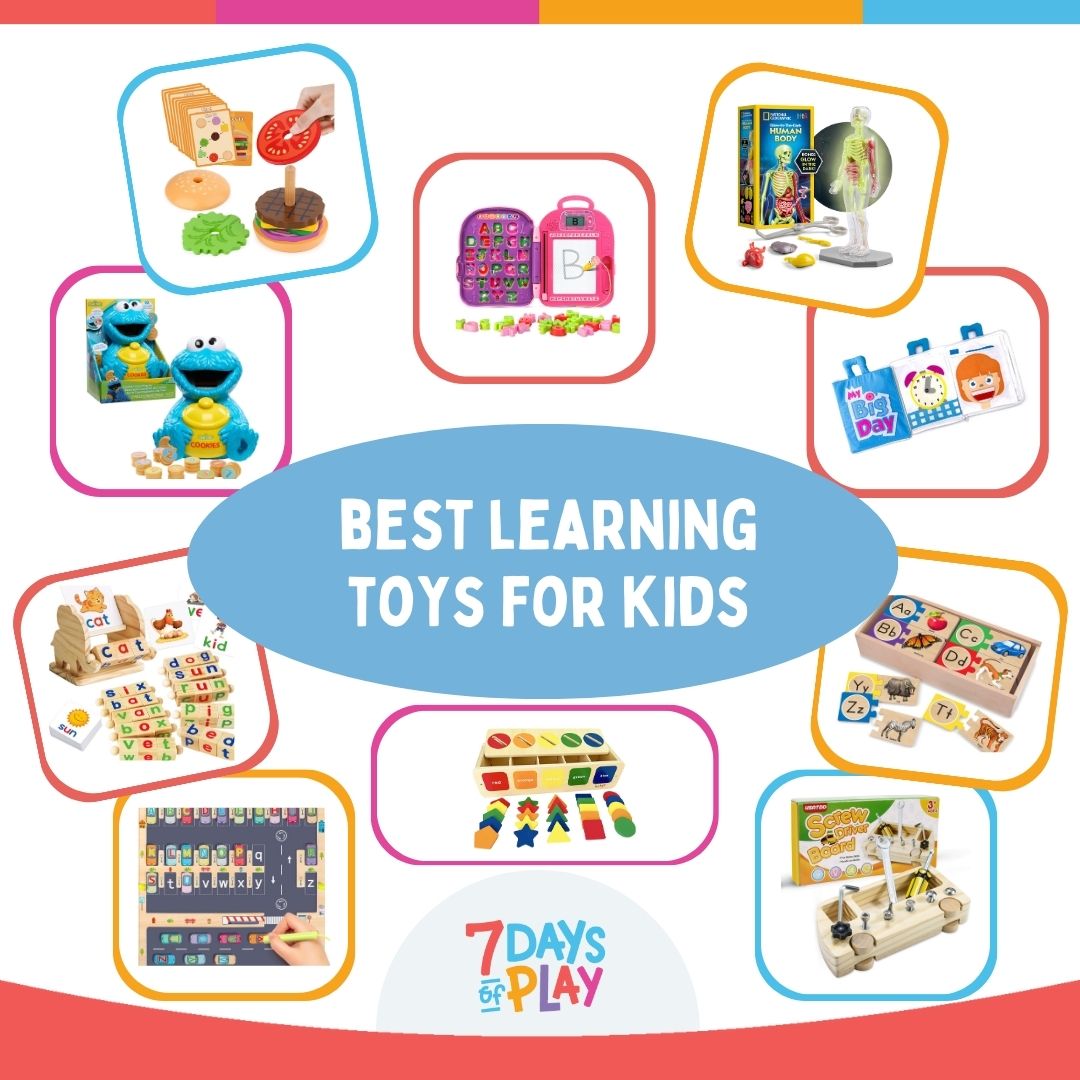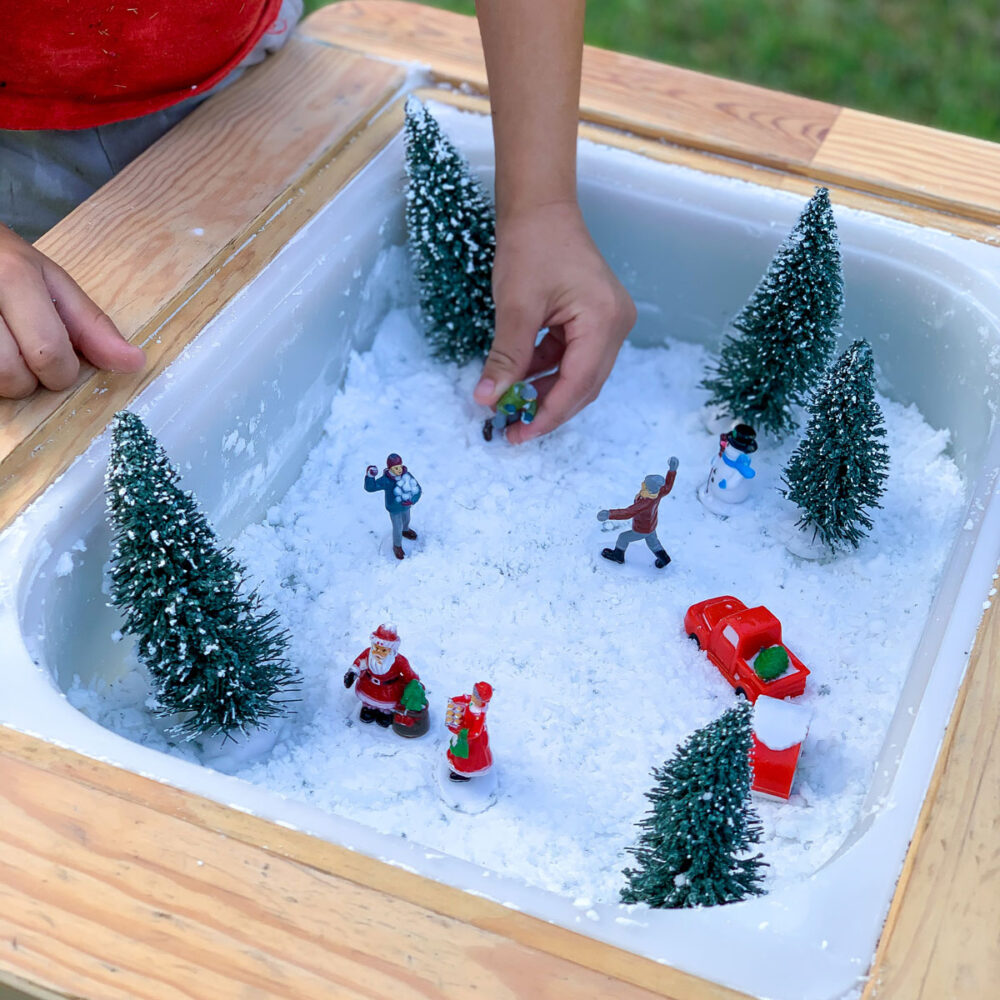Easy Experiment to do at Home and Beyond – Fizzy Science
Want to wow your kiddos with beautiful color explosions? This set up is such an easy experiment to do at home, yet so much fun! The set up time, takes all of a few minutes! Kids can enjoy discovering the fizzy chemical reaction of baking soda and vinegar while channeling their inner Jackson Pollock!
Don’t Miss Our Fizzy Snowman Experiment!
If your kiddo loves this experiment, you have to try our fizzy snowman experiment. It is a fun winter-themed way to not only make and play with fake snow, but explore chemical reactions using only common household items.
All activities should be supervised by an adult. As an Amazon Associate I earn from qualifying purchases. This post may contain affiliate links.
Watch the Video to See How to Make this Coin Game
Watch the Video to See This Easy Experiment to do a Home in Action!
Kids can enjoy strengthening fine motor skills while using droppers to release colorful vinegar on top of a layer of baking soda! You can see how fun it is to watch as the chemical reaction causes fizz and froth to form!
Using multiple colors results in a beautiful tray that truly looks like a piece of artwork!
Watch the Video to See This Easy Experiment to do a Home in Action!
Kids can enjoy strengthening fine motor skills while using droppers to release colorful vinegar on top of a layer of baking soda! You can see how fun it is to watch as the chemical reaction causes fizz and froth to form!
Using multiple colors results in a beautiful tray that truly looks like a piece of artwork!
How to Set Up This Easy to do Experiment at Home!
This easy experiment to do at home, is so simple to set up! The ingredients (listed below!) are all common household goods. I have a few tips to get the most bang for your buck!
First, only use a thin layer of baking soda. That is all that is needed to create fun fizzy explosions of color!
Another tip is that while you can use food coloring to make the vinegar colorful, I prefer to use liquid watercolor. Liquid watercolor comes in larger quantities and is washable.
Lastly, for younger kids who haven’t quite developed the skill to use droppers, use a small cup instead to scoop of some vinegar and pour it on the baking soda tray!
Materials
- Tray or Plate
- Baking Soda
- Vinegar
- Reusable Cups
- Liquid Watercolor or Food Coloring
- Droppers
- Tray or Plate
- Baking Soda
- Vinegar
- Reusable Cups
- Liquid Watercolor or Food Coloring
- Droppers
Step-by-Step Instructions
Step 1
In a shallow tray or plate, spread a thin layer of baking soda.
Step 2
Fill 6 cups up with white vinegar.
Step 3
Add a few drops of liquid watercolor or food coloring to each cup based on your preferred vibrancy.
Step 4
Provide droppers (or a small cup for toddlers) to transfer the vinegar mixture to the baking soda.
Step 1
In a shallow tray or plate, spread a thin layer of baking soda.
Step 2
Fill 6 cups up with white vinegar.
Step 3
Add a few drops of liquid watercolor or food coloring to each cup based on your preferred vibrancy.
Step 4
Provide droppers (or a small cup for toddlers) to transfer the vinegar mixture to the baking soda.
Educational Benefits of this Fizzy Rainbow Science Experiment
This is not only an easy experiment to do at home, but there is also so much a child can learn in the process!
Artistic Expression: There are many ways to conduct a baking soda and vinegar science experiment, but this is a fun way to also integrate art and color mixing.
Chemical Reactions: Explain to your child that baking soda is a base, and vinegar is an acid, and when they combine, a chemical reaction occurs. The fizz and froth that is created is called carbon dioxide.
Sensory Play: Once everything has been combined, kids can’t resist but put their hands into the colorful tray and see what it feels like! This is safe to do and such a fun sensory experience!
Educational Benefits of this Fizzy Rainbow Science Experiment
This is not only an easy experiment to do at home, but there is also so much a child can learn in the process!
Artistic Expression: There are many ways to conduct a baking soda and vinegar science experiment, but this is a fun way to also integrate art and color mixing.
Chemical Reactions: Explain to your child that baking soda is a base, and vinegar is an acid, and when they combine, a chemical reaction occurs. The fizz and froth that is created is called carbon dioxide.
Sensory Play: Once everything has been combined, kids can’t resist but put their hands into the colorful tray and see what it feels like! This is safe to do and such a fun sensory experience!
More Ways to Explore Science Experiments
Here are my top picks science experiments and kits you can buy!
This science kit for kids includes 30 scientific experiments plus fun gear like a lab coat, goggles, and other scientific equipment!
This kit is specifically about exploring color-related science experiments! It includes 12 fun experiments and a lab book!
Steve Spangler Science Color Fizzers
This set of 100 tablets comes in primary colors. You can mix the colored water to create different colors.
National Geographic Earth Science Kit
This kit lets your children learn hands-on about geology and chemical reactions in volcanoes.
What’s Next?
The Best Gifts for 8 to 12 Year Olds!
Find the best gifts for 8 to 12 year olds with our top picks for boys and girls—perfect for sparking creativity and fun for kids this age!
Best Learning Toys for Kids
Looking for the best learning toys for kids? We’ve got you covered with this list of educational gifts that kids will love and learn from!
DIY Snow for Sensory Play: 4 Easy Kid Recipes
Learn how to make DIY snow for sensory play in minutes! These 4 fake snow recipes for kids are perfect for home, classroom, or sensory bins.

